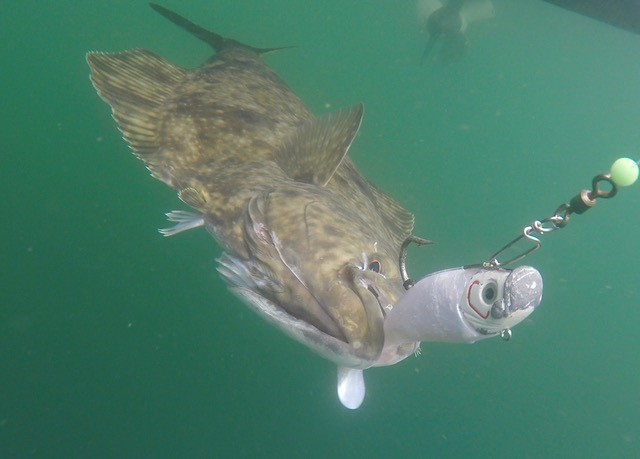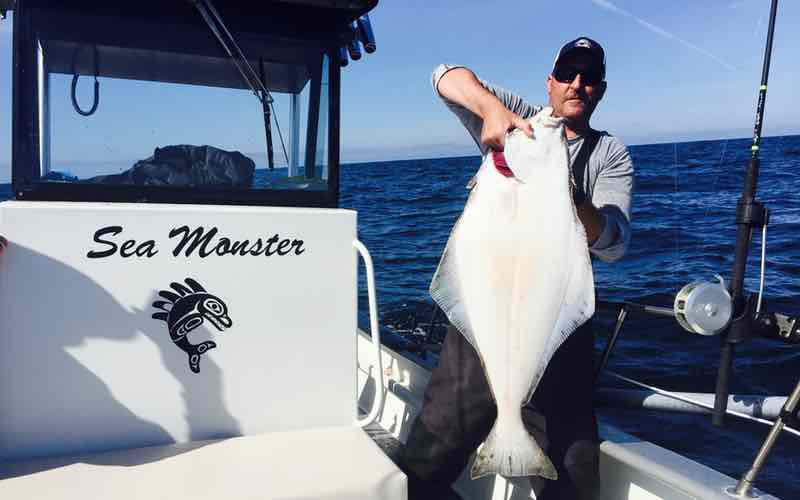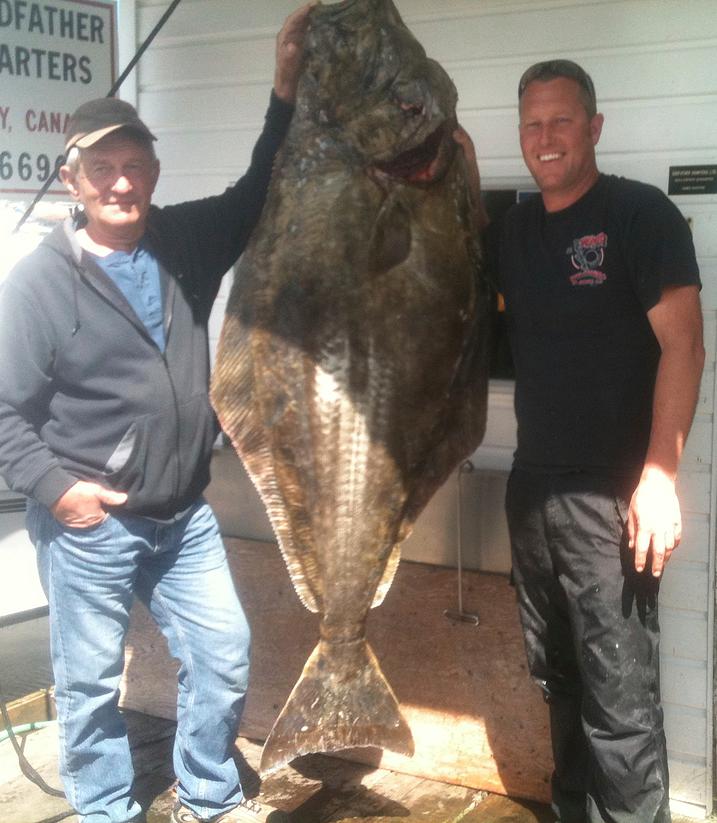Halibut fishing on Vancouver Island offers abundant opportunities due to its rich marine ecosystems. The island’s waters are ideal for both novice and experienced anglers seeking halibut.
Vancouver Island, located in British Columbia, Canada, is renowned for its exceptional halibut fishing spots. These waters provide a thrilling challenge for those passionate about fishing. Surrounded by the Pacific Ocean, the environment around the island supports a healthy halibut population, making it a premier destination for fishing enthusiasts.
The activity peaks from March to October, offering ample time for visitors to plan their fishing trips. Local charters and guides are available to enhance the fishing experience, ensuring safety and increasing the chances of a successful catch. Whether you are planning a day trip or a longer fishing adventure, Vancouver Island delivers an unforgettable experience with scenic views and rich waters.
Vancouver Island’s Halibut Haven
Vancouver Island offers a rich halibut fishing experience with several prime locations. Swiftsure Bank and Port Renfrew are hotspots known for their abundant halibut populations. Tofino provides not only scenic beauty but also excellent opportunities for anglers.
Seasonal patterns greatly influence halibut activity. Peak times generally occur from late spring through early fall. Many anglers plan their trips around April to September, when halibut are most active. During these months, the chances of a bountiful catch increase significantly. Timing your visit with these peak periods can yield the best results.
Gearing Up For The Giant Halibut
Gearing up for Halibut fishing on Vancouver Island requires specific tackle and bait. Heavy-duty rods and reels are essential, as Halibut can grow exceptionally large. Anglers should use strong lines, typically ranging from 80-150 pounds, to handle the potential catch size. Circle hooks and J-hooks prove effective, but choosing the right size is crucial for success.
For bait, most prefer herring, octopus, or salmon bellies. These baits have proven to attract Halibut due to their scent and movement in the water. Lures can also be used, with many opting for large jigs or plastic fish replicas.
Those needing equipment can find boat and gear rental options available. Many local shops offer full gear setups and boats suitable for Halibut fishing. It’s advisable to book in advance, especially during peak fishing seasons.
Techniques For A Successful Catch
Successful halibut fishing demands patience and skill. Mastering bottom fishing techniques is key for a fruitful outing. Utilize a heavy-duty rod and reel for the best experience. Strong currents can impact your success, so choose the right sinkers and baits.
Chumming the waters can attract more fish. Always be mindful of local regulations. Keep your bait near the ocean floor, where halibut feed. Quick reflexes are essential to set the hook firmly.
Expert anglers recommend using circle hooks for better catch rates. GPS and fish finders are invaluable tools. They help in locating prime fishing spots. Keep an eye on the weather forecast. Safe navigation is as important as a successful catch.

Credit: eaglenook.com
Sustainability And Regulations
Understanding Size and Bag Limits is crucial for Halibut fishing enthusiasts. Authorities have set these limits to ensure long-term sustainability of fish populations. Anglers must adhere to a maximum size limit, often referred to as a ‘slot limit’, which allows them to keep halibut within a specific size range. This practice helps protect breeding-sized fish. The bag limit refers to the number of halibut one can retain per trip. Keeping within these limits is vital for the health of marine ecosystems around Vancouver Island.
Responsible Fishing Practices involve more than following regulations. Fishers should employ techniques that minimize harm to halibut and release any unintended catch promptly. Using circle hooks and dehooking tools can reduce injury to the fish. Additionally, understanding local habitats and avoiding sensitive areas helps protect the underwater environment. By engaging in these practices, anglers contribute to a sustainable future for halibut fishing.
Guided Adventures And Charters
Choosing the right charter service is key for a memorable fishing trip. Look for services with experienced guides and good reviews. Ensure they provide all necessary equipment and safety gear. Ask about the types of fish targeted, especially halibut, and the fishing techniques they use.
On a guided trip, expect an early start and a full day of fishing. Most charters offer all-inclusive packages that cover bait, tackle, and sometimes food. You will learn from experts about best fishing spots and methods. The goal is to enjoy the thrill of catching big halibut while admiring the beautiful scenery of Vancouver Island.

Credit: wildcoastwildernessresort.com
From Ocean To Table
Cleaning your halibut right after catching it is crucial. First, bleed the fish by cutting near its gills. Next, remove the guts and rinse the cavity thoroughly. Lastly, fillet the fish or cut it into steaks.
Trying out halibut recipes can be fun and tasty. A simple recipe is halibut steaks grilled with lemon and herbs. Another favorite is baked halibut with a crust of parmesan and breadcrumbs. Both dishes are delicious and easy to prepare.
Facing The Challenges Of Halibut Fishing
Successful halibut fishing on Vancouver Island demands knowledge and skill. Avoiding common mistakes is crucial for a fruitful experience. One key error is neglecting to check weather forecasts; unexpected rough seas can be dangerous. Another frequent oversight involves improper bait preparation or use, which can lead to a disappointing catch.
Anglers should also be wary of incorrect anchor use. This can result in drifting and missing prime fishing spots. Moreover, failing to bring the right gear may leave fishermen unprepared for the challenges of the deep sea. Proper planning and equipment are your best allies against the unpredictable nature of the ocean.

Credit: chromersportfishing.com
Capturing The Experience
Capturing the perfect moment on Vancouver Island calls for some essential photography tips. Halibut fishermen can enhance their photo skills with a few simple tricks. First, ensure your camera settings are ideal for daylight exposure. A quick shutter speed will freeze the action of a thrashing halibut. Consider the rule of thirds for a balanced composition. This technique helps position your trophy catch in an eye-catching manner.
Sharing your fishing victories and stories brings joy to fellow enthusiasts. Utilize social media platforms like Instagram and Facebook to display your prized catches. A captivating caption paired with your photo can engage a larger audience. Remember to tag your location to attract viewers who dream of halibut fishing on Vancouver Island. Your shared experiences may inspire others to embark on similar adventures.
Frequently Asked Questions
Where Is The Best Place To Catch Halibut On Vancouver Island?
The best place to catch halibut on Vancouver Island is in the Swiftsure Bank region, renowned for its abundant halibut population.
What Is The Best Month For Halibut Fishing?
The best month for halibut fishing is typically June, when these fish are most actively feeding.
How Many Halibut Can You Keep In Bc?
In British Columbia, you can keep up to three halibut per license per day. Annual limits also apply, set at six halibut per person.
What Is The Best Depth To Catch Halibut?
The ideal depth for catching halibut typically ranges from 30 to 600 feet, depending on the location and time of year.
Conclusion
Embarking on a halibut fishing adventure around Vancouver Island rewards with more than just a catch. This experience fuses thrill with nature’s serenity, promising memories that last. Ensure your trip is successful; consider local charters for expert guidance. Vancouver Island awaits, ready to offer the fishing journey of a lifetime.
